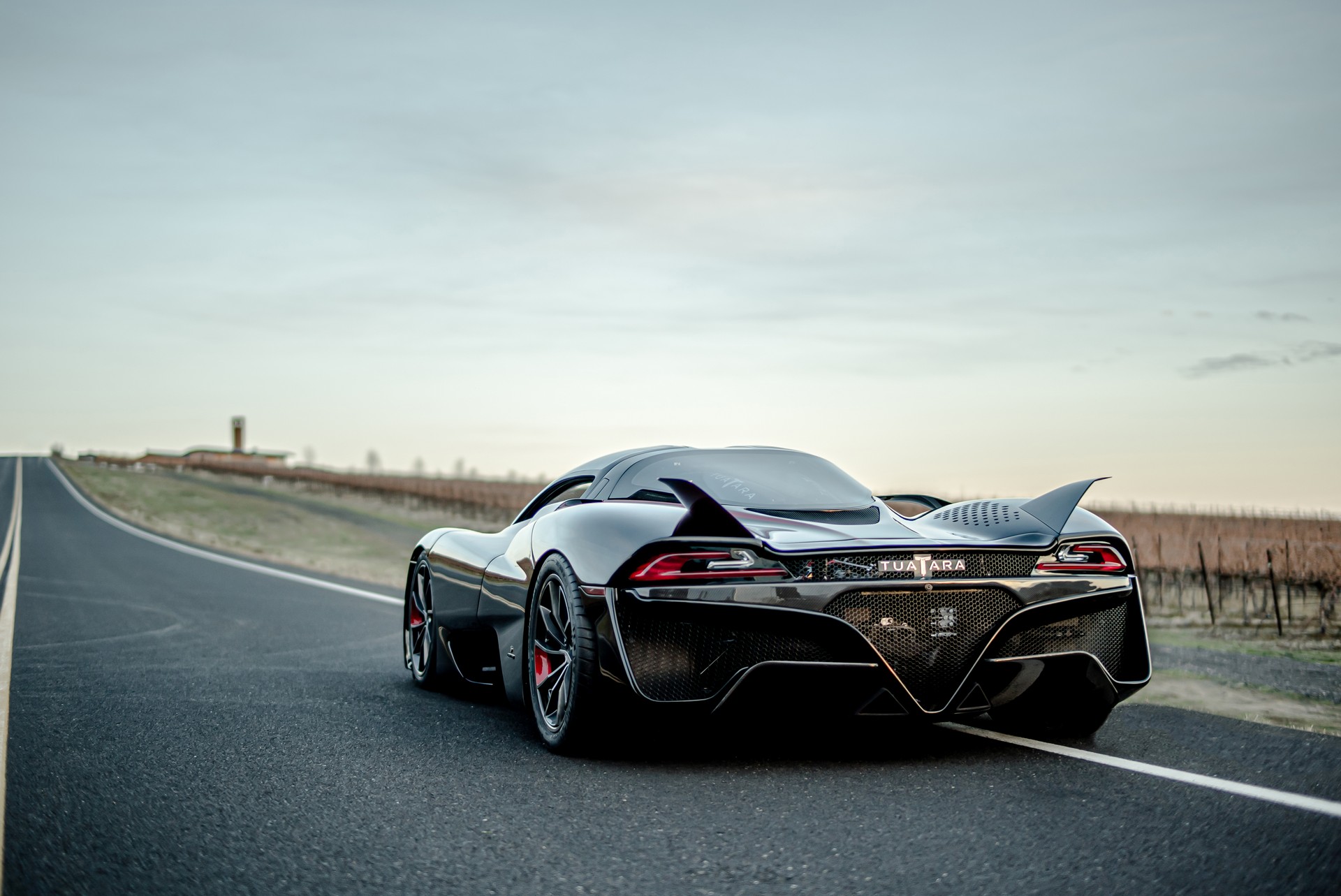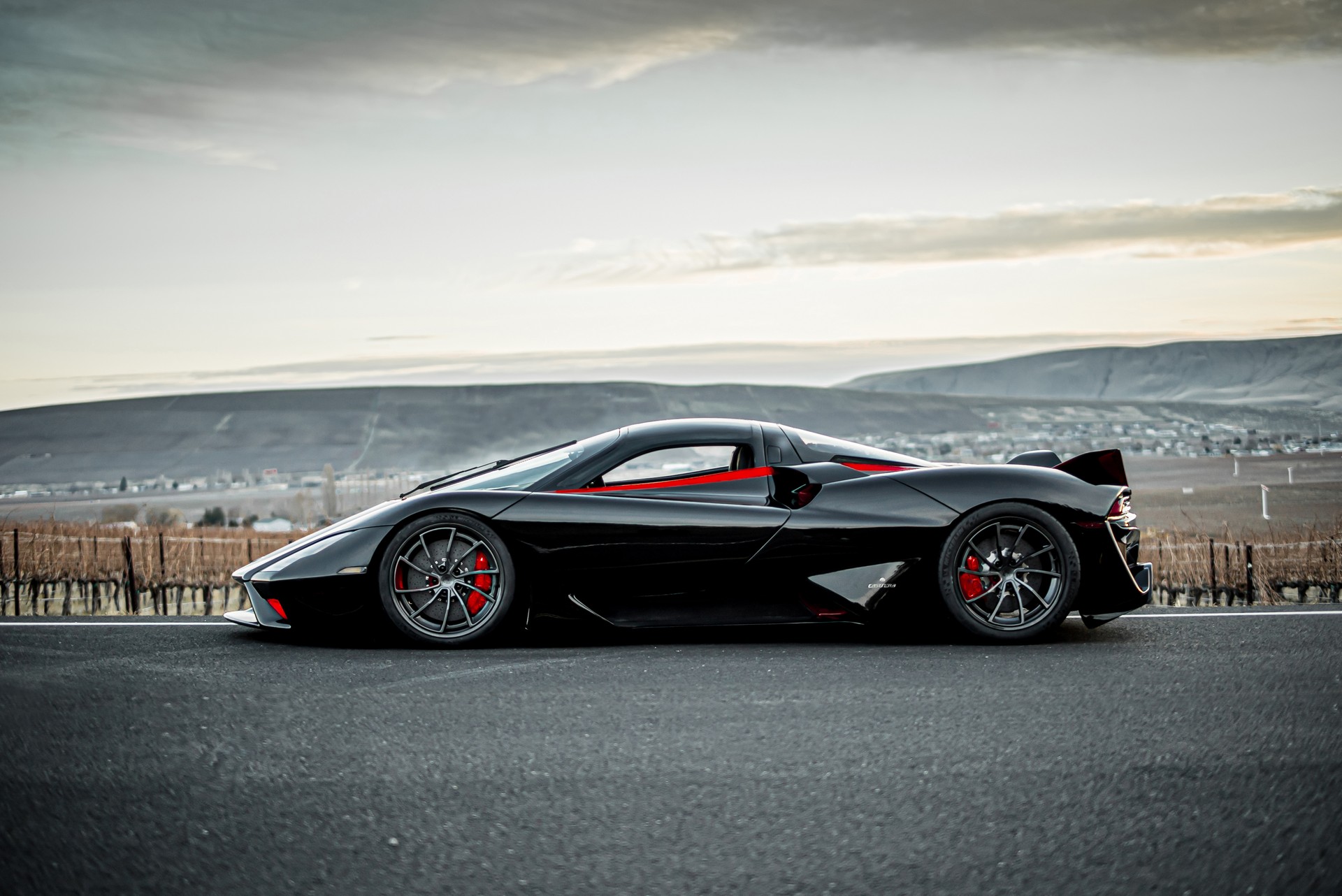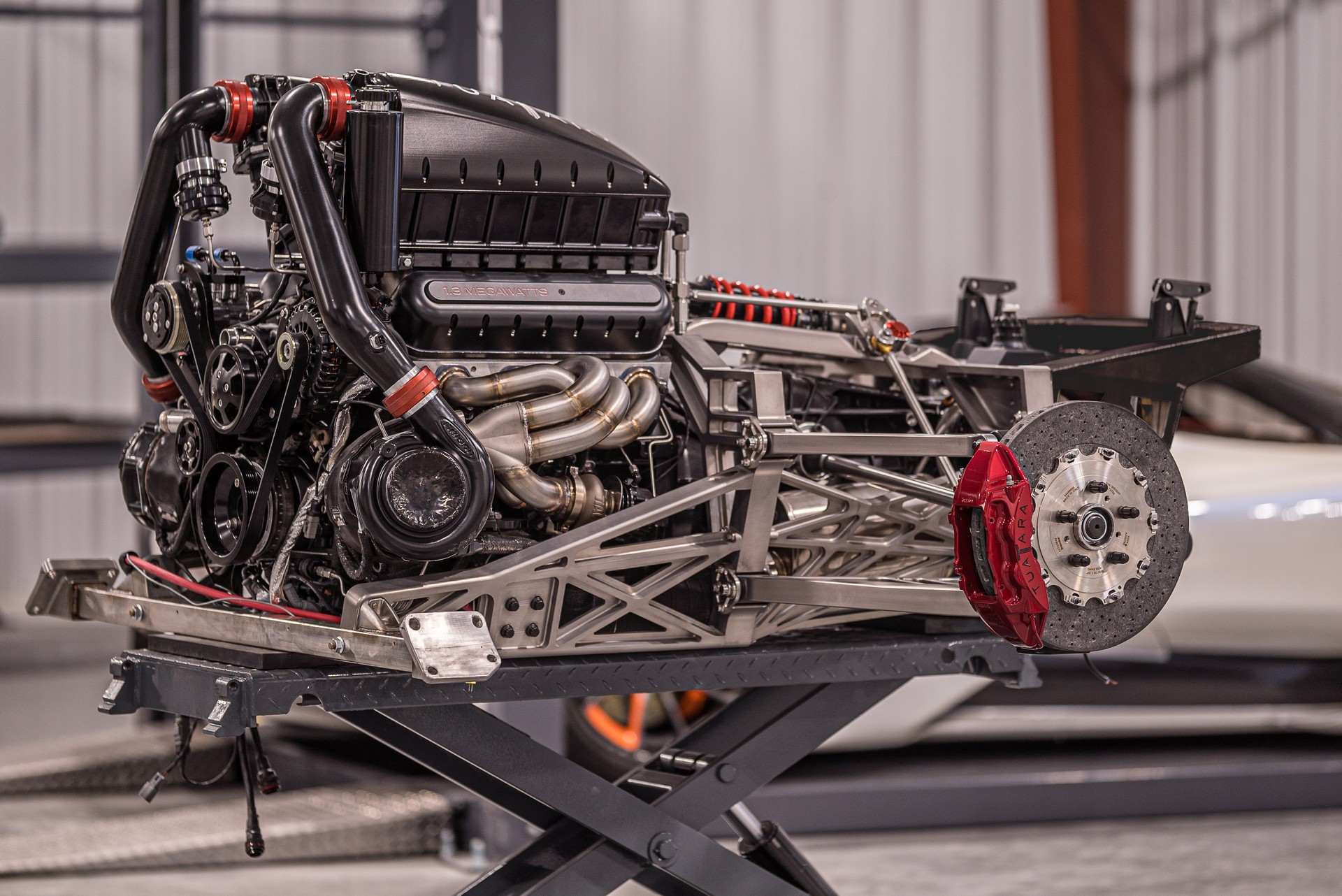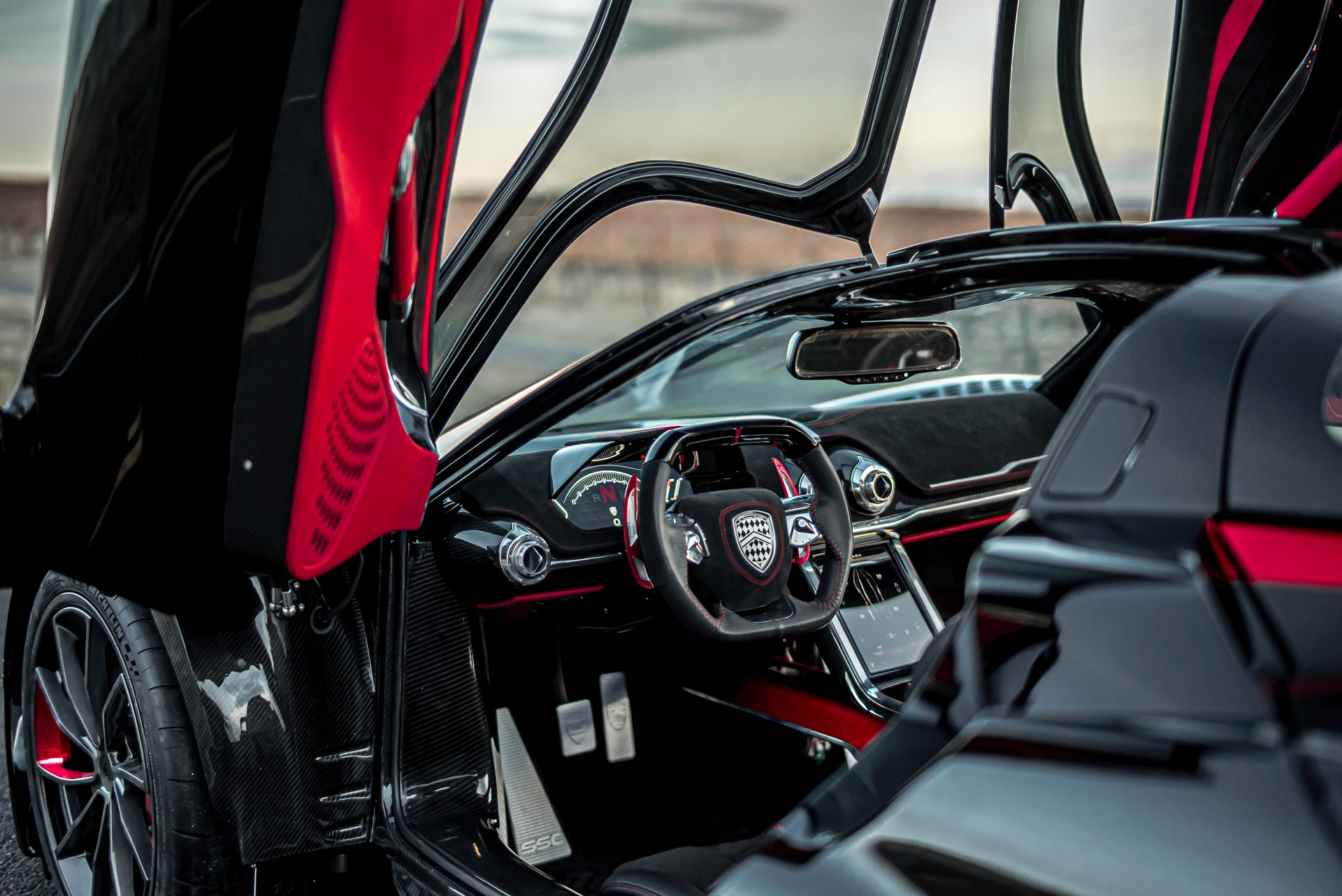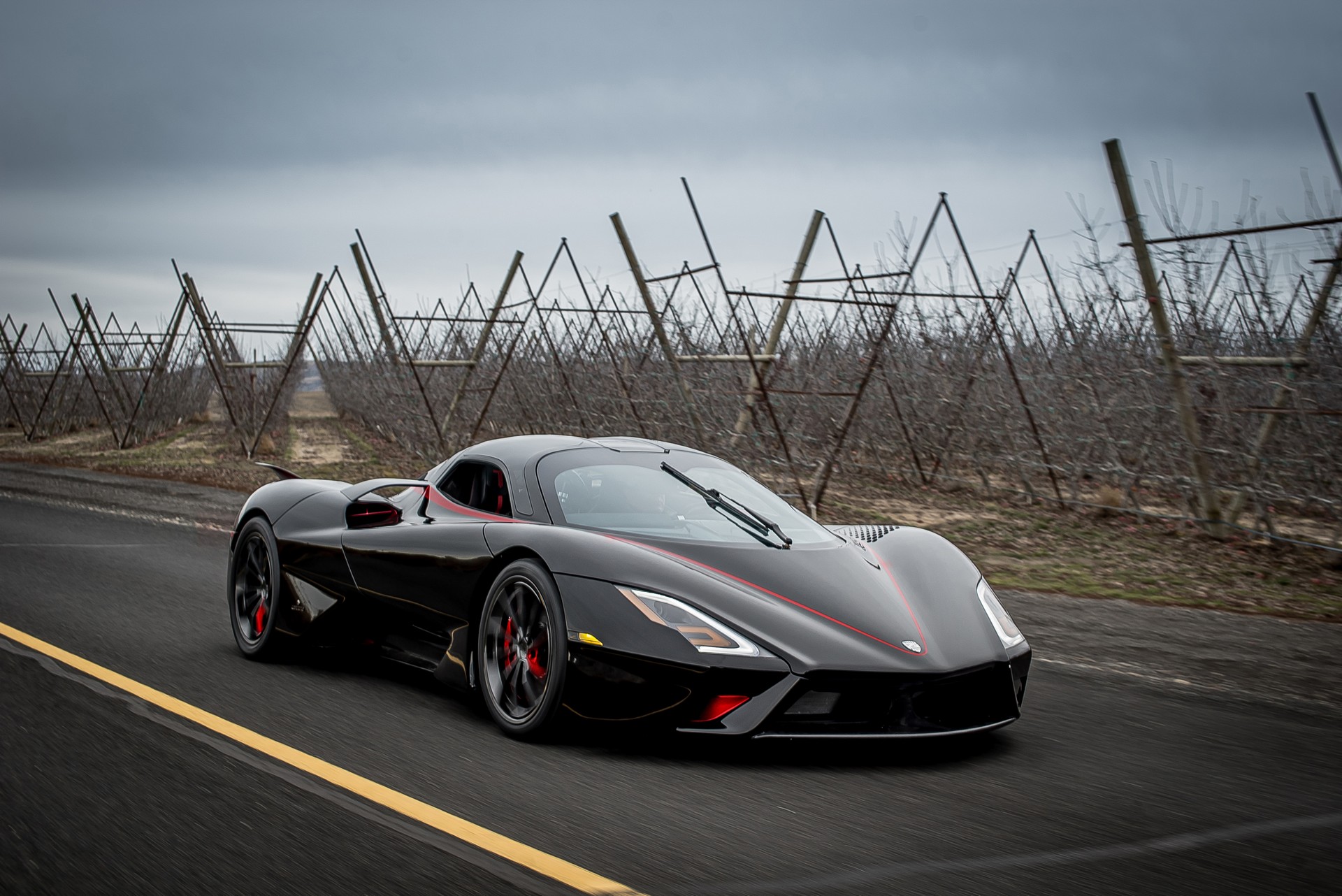Update: SSC wouldn’t confirm the record-breaking attempt, but told us they have made “no secret of its plans to set a world top-speed record with the 1,750 hp Tuatara. We welcome speculation and buzz about whether we’ll be doing this soon, or have already done it. If/when the time is right, we’ll be in touch with news.”
The original story continues below:
The SSC Tuatara is the successor to the Ultimate Aero which held the Guinness World Record for the fastest production car between 2007 and 2010.
Given that pedigree, it was only a matter of time before the new model would attempt to set a record of its own.
That reportedly happened over the weekend as the Nevada Department of Transportation revealed travelers on State Route 160 would be facing delays due to a “special two-day filming event.” While the press release didn’t go into specifics, the Pahrump Valley Times reported the delays were related to SSC’s “world land speed record attempt for a production car.”
Also Watch: SSC Tuatara Leaves A Bugatti Veyron In Its Wake, Hits 242 MPH Without Breaking A Sweat
The paper went on to note the section of road between Las Vegas and Pahrump is a familiar stomping ground for speed records as the Koenigsegg Agera RS used the strip of highway to hit 277.9 mph (447.2 km/h) back in 2017.
SSC is staying quiet, but a tipster told us the Tuatara beat the record set by the Agera RS. The tipster didn’t say how fast the car was, but the company has previously said the model is able to hit speeds in excess of 300 mph (483 km/h).
While Bugatti hit 304.773 mph (490.484 km/h) in a prototype last year, the car didn’t do an averaged two-way run as required by Guinness. However, it will be interesting to see if SSC was able to eclipse that.
As a refresher, the Tuatara has a twin-turbo 5.9-liter V8 engine that produces 1,350 hp (1,007 kW / 1,369 PS) on 91 octane fuel. However, the output climbs to a staggering 1,750 hp (1,305 kW / 1,774 PS) when running on E85.
Besides the almighty engine, the car has advanced aerodynamics and a class-leading drag coefficient of 0.279. Designer Jason Castriota has previously said the design “maintains an identical aero balance from 100 mph (161 km/h) to well over 300 mph (483 km/h), resulting in an incredibly stable and predictable car that instills absolute confidence in the driver.”





